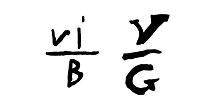Faience factory Lesum
The Lesum faience factory was founded by Johann Christoph Vielstich in 1756 and operated until around 1800 for earthenware vessels and faience in what is now the Burglesum district of Bremen .
history
Vielstich (1722–1800) came from Braunschweig. He had previously worked as a journeyman in Hamburg and had built up and managed the Aumund faience factory from 1751 , but left it in 1755 to set up his own pot bakery and faience factory in nearby Lesum . Between 1756 and 1758 he put two ovens into operation, in which he burned more simple utensils made of clay than tableware made of faience. Only when the privilege of the Vegesack competition expired in 1760 did the Lesum company flourish for a few years. In 1766, Vielstich worked with 7 journeymen, an apprentice and 5 day laborers. Then the decline and increasing debt began. The bankruptcy in 1773 forced Vielstich to auction. His brother-in-law, the miller Tjark Brinkama (1731-1820) in Grohn, acquired the company in which the production of high-quality faiences played an increasingly minor role, even though Vielstich continued to work there until his death (January 12, 1800).
In 1981 the Bremen state archaeologist carried out soil examinations at the former site of the factory during construction work. A kiln made of bricks was uncovered, which was later installed in the school at Am Mönchshof .
Lesum faiences
The manufactory's range of sophisticated tableware included B. lid terrines, bowls, plates, jugs and some figurative lidded boxes. The painting used harsh fire paints throughout , but the glaze (or the clay used?) Is occasionally poor and tends to crack. Brands of the manufactory show a V or Vi above a horizontal line, under which a painter's initial (B, G, E, H, K, L, P, W) is placed.
The wealthy public in the second half of the 18th century turned more and more to real porcelain. From the 1770s onwards, the manufactory was forced to produce more simply shaped and stereotypically decorated items such as jugs for less affluent buyers. A specialty of Vielstich, who had completed his apprenticeship with a Hamburg tile potter, are his tall tiled stoves. Of the verifiably 30 ovens, two have been preserved in the Focke Museum and one in the Schönebecker Heimatmuseum ; Both museums also have the largest inventory of preserved tableware from Lesum.
Individual evidence
- ↑ Kiln came to light. In: The North German / Weser Courier. Bremen, June 25, 1981.
literature
- W. Gerhold: Faience production in the eighteenth century in and around Bremen. In: Yearbook of the Bremen Collections. Vol. 4, 1911, ZDB -ID 401790-0 , pp. 60-75, ( digitized version ).
- Heinz Wilhelm Haase: The Terhellen faience factories in Vegesack and Vielstich in Lesum. In: Heinz-Peter Mielke (Hrsg.): Keramik an Weser, Werra and Fulda (= writings of the Minden Museum for History, Regional and Folklore. Art History Series. H. 1). Uhle and Kleimann, Lübbecke 1981, ISBN 3-922657-20-6 , pp. 145-152.
Coordinates: 53 ° 10 ′ 12.4 " N , 8 ° 41 ′ 23.9" E
